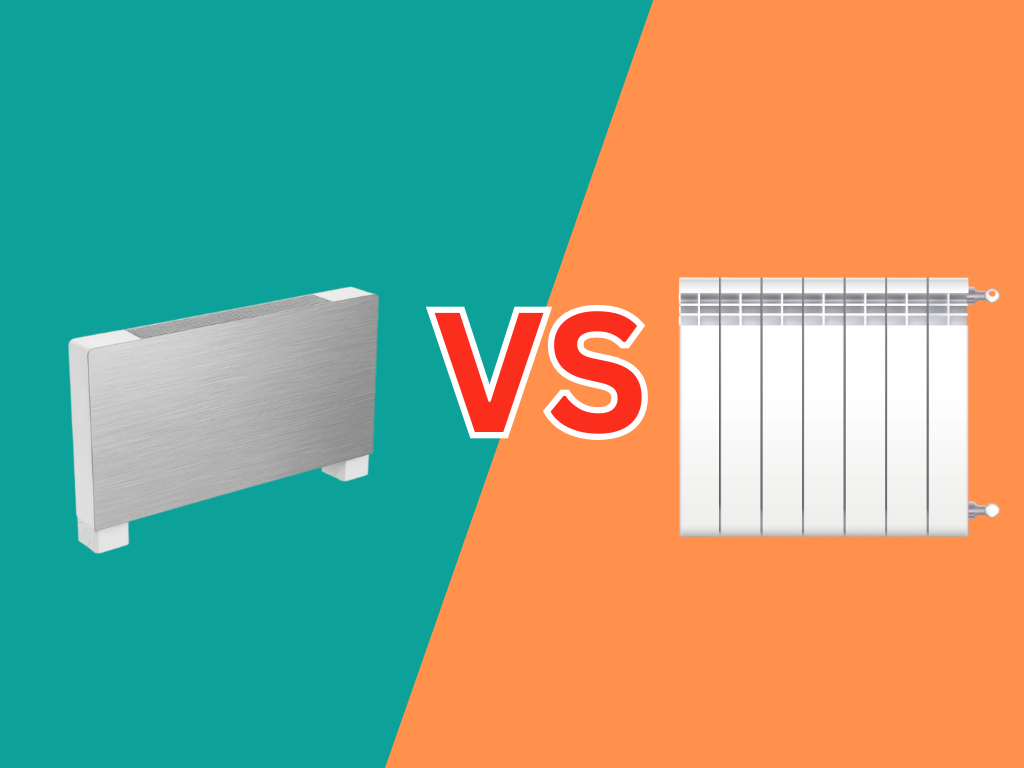Heat pumps are becoming the new standard for home comfort, providing energy-efficient heating and cooling for residential and commercial spaces. Air-source heat pumps can be used with floor heating, radiators, or fan coil units. Choosing the right heating system has a direct impact on costs, efficiency, and comfort. Let’s compare radiators and fan coil units to help you make a wise decision.

A fan coil unit (FCU) is a water-cooling system consisting of a heat exchanger coil, a fan, and a filter. It works by using a fan to move air across the coil, which is heated or cooled by water, rapidly distributing the conditioned air throughout the room.
A radiator is a traditional heating device that relies on radiation to transfer heat. Hot water generated by a heat pump circulates through the radiator, ultimately dissipating the heat into the room.
Heat pumps typically operate most efficiently at low water temperatures (30-50°C).
Fan coil units: Designed to operate at lower temperatures, they are extremely efficient when used with heat pumps. They can also provide cooling in the summer.
Radiators: Older radiator systems may require higher water temperatures to adequately heat a room, which can reduce the efficiency of a heat pump. However, modern, low-temperature radiators can improve compatibility.
Fan Coil Units: Provide fast heating and cooling, with an integrated fan to circulate air. Some models come with an air filter to improve indoor air quality by removing dust and other particles from the air. The fan-forced air circulation speeds up heating and distributes heat more evenly. Most fan coil units offer adjustable fan speed, increasing or decreasing the amount of heat you receive. This means you can adjust the temperature to your exact needs.
Radiators: Provide consistent, comfortable radiant heat without the need for airflow. Radiators are quieter, but they are slower to respond to changes in room temperature. Heat distribution is also less even.
Fan coil units: These may have higher upfront costs due to the added fans and controls, but can reduce long-term energy use. Installation can also be more complex, requiring additional plumbing and electrical work.
Radiators: These are generally cheaper to purchase and install, especially in existing homes, but may not provide cooling unless combined with a separate system. They are easier to install and can usually replace existing systems with minimal disruption.
If you want year-round comfort (heating & cooling), fast response times, and maximum heat pump efficiency, a fan coil unit is generally a better choice. Compared to traditional radiators, fan coil units can save over 30% in energy.
If you prefer a traditional and more silent heating method with a lower initial investment, a radiator may be a better choice, especially a modern, low-temperature model.
| Feature | Fan Coil Unit (FCU) | Radiators |
|---|---|---|
| Heating & Cooling | Heating and cooling | Heating only |
| Efficiency with Heat Pump | Excellent at low water temperatures (30–50°C) | Older models need higher temps, modern low-temp models available |
| Response Time | Fast – quickly adjusts room temperature | Slower – gradual heating |
| Comfort | Even air distribution, optional air filtration | Steady radiant heat, no airflow |
| Noise Level | Some fan noise (depending on model) | Silent operation |
| Installation & Cost | Complex installation and high upfront costs | Easy to install and generally lower upfront cost |
| Best For | Year-round comfort, modern homes, energy savings | Traditional setups, quiet heating |
Both fan coil units and radiators can be used with heat pumps, but the right choice depends on your comfort preferences, budget, and whether you need cooling. For most modern installations, fan coil units offer greater efficiency and flexibility, making them the preferred option for maximizing heat pump system performance.